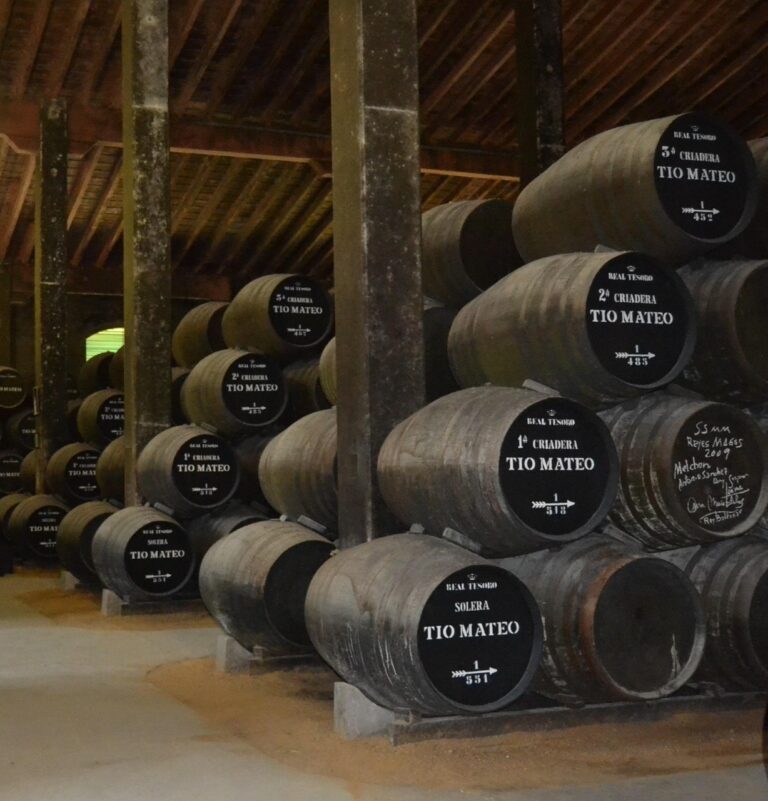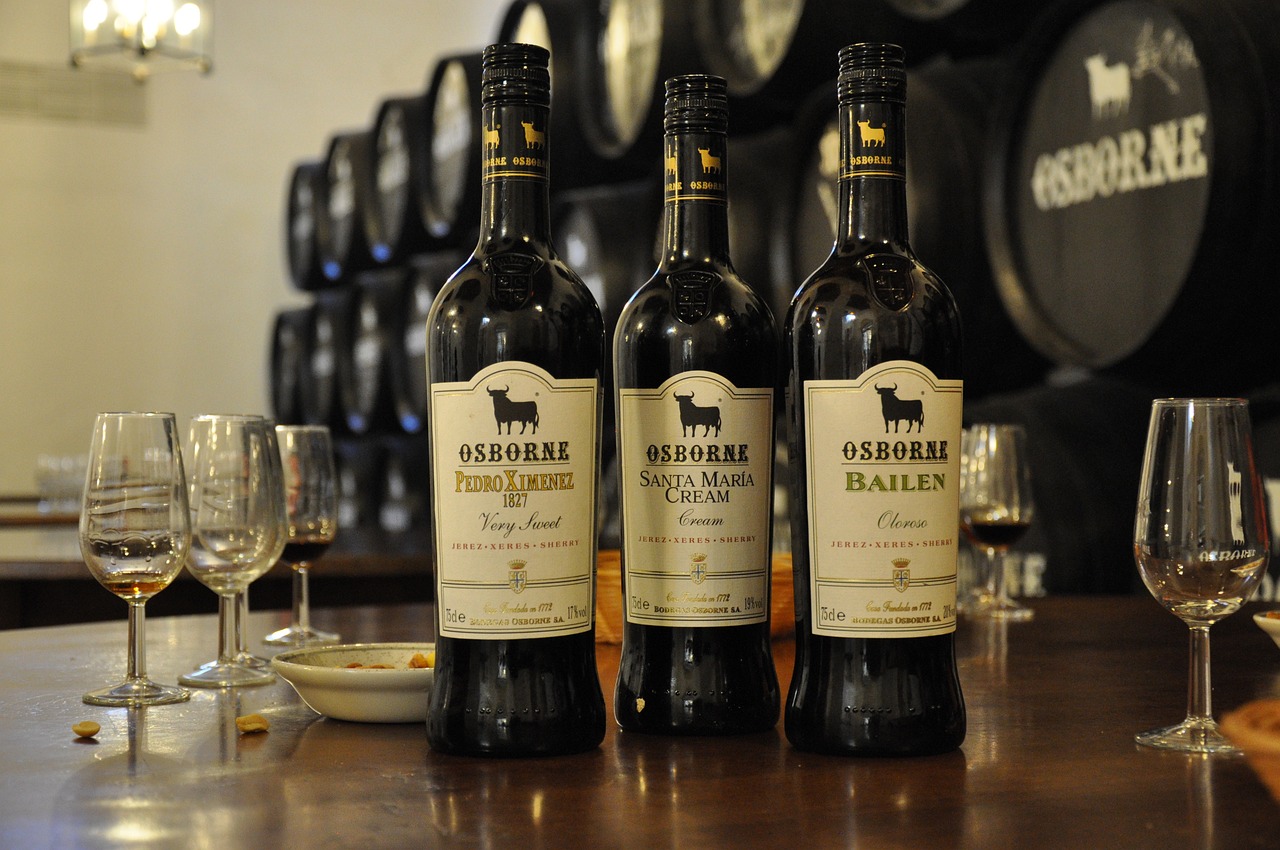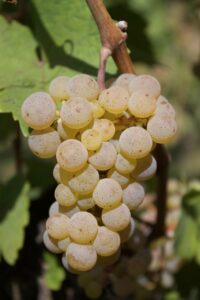Sherry is one of the world’s most complex and versatile wines, yet it remains underappreciated outside of Spain. Produced in the Jerez Triangle in southern Spain, Sherry comes in a wide range of styles, from bone-dry Finos to lusciously sweet Pedro Ximénez (PX).
For WSET Level 3 students, understanding Sherry is essential due to its unique production methods, solera aging system, and diverse styles. This guide explores the key aspects of Sherry, including its grape varieties, classifications, winemaking techniques, and food pairings.
The Jerez Region: The Heart of Sherry Production
Sherry is produced in Andalucía, within the Jerez-Xérès-Sherry DO (Denominación de Origen). The region has a hot Mediterranean climate with cooling influences from the Atlantic Ocean, which help maintain acidity in the grapes.
The Jerez Triangle consists of three key towns:
Jerez de la Frontera – The commercial center of Sherry production.
Sanlúcar de Barrameda – Home to Manzanilla Sherry, benefiting from strong coastal winds.
El Puerto de Santa María – Known for producing well-balanced Sherries.
Key Grape Varieties in Sherry
Unlike other fortified wines, Sherry relies on three key grape varieties, each contributing to different styles:
Palomino – The dominant grape, used for dry styles like Fino, Manzanilla, Amontillado, and Oloroso. It has low acidity and a neutral flavor, making it ideal for the aging process.
Pedro Ximénez (PX) – A naturally sweet grape used for dessert-style Sherries. Grapes are sun-dried (asoleo process) to concentrate sugars, creating rich, syrupy wines.
Moscatel – Less common, used in some sweet and aromatic Sherries.
Sherry Winemaking: Fortification and Aging
1. Biological vs. Oxidative Aging
Sherry develops through two primary aging methods:
Biological Aging (Flor Yeast) – In styles like Fino and Manzanilla, a layer of flor (a yeast film) forms on the surface, protecting the wine from oxidation. This results in light, dry, and nutty flavors.
Oxidative Aging – In styles like Oloroso, the wine is exposed to oxygen, leading to darker color and richer flavors of dried fruit, toffee, and spice.

2. The Solera System
Sherry is aged using the Solera system, a dynamic aging process where younger wines are blended with older wines. This creates consistency in flavor and allows older Sherry to influence younger batches.
Criaderas (Nurseries) – Young wines start in the top barrels.
Solera (Bottom Layer) – The oldest wines are stored here, ready for bottling.
Each year, a portion of mature wine is drawn and replaced with younger wine.
Styles of Sherry
Dry Styles (Made from Palomino Grapes)
1. Fino
Aged biologically under flor for at least two years.
Pale yellow with flavors of almonds, green apple, and bread dough.
Served chilled (6–8°C) and pairs well with seafood and tapas.
2. Manzanilla
A type of Fino exclusively aged in Sanlúcar de Barrameda.
Benefits from coastal humidity, creating a more delicate, saline flavor.
Great with fried fish and olives.
3. Amontillado
Begins as a Fino, but flor dies, leading to partial oxidative aging.
Medium amber in color, with flavors of hazelnuts, caramel, and dried fruit.
Best served at 12–14°C with grilled meats or cured ham.
4. Oloroso
Fortified early to prevent flor growth, undergoing full oxidative aging.
Dark mahogany with intense flavors of walnuts, leather, and spice.
Pairs with game meats and aged cheeses.
5. Palo Cortado
Rare and highly prized, combining Amontillado’s aroma with Oloroso’s body.
Complex, with notes of dried fruit, orange peel, and vanilla.
Best with foie gras or mushroom-based dishes.
Sweet Styles
6. Pedro Ximénez (PX)
Made from sun-dried Pedro Ximénez grapes.
Thick and syrupy, with intense flavors of raisins, figs, and chocolate.
Served at 12–14°C as a dessert wine or drizzled over ice cream.
7. Moscatel
Similar to PX but with more floral and citrusy notes.
Often enjoyed with pastries and blue cheese.
8. Cream Sherry
A blend of Oloroso and sweet PX, resulting in a rich, velvety wine.
Best served slightly chilled with desserts or nuts.
Sherry Wine Classifications and Food Pairing
Sherry wines are labeled based on aging and sweetness levels. Key classifications include:
VOS (Vinum Optimum Signatum) – Aged at least 20 years.
VORS (Vinum Optimum Rare Signatum) – Aged at least 30 years.
Sweetness levels are categorized as:
Seco (Dry) – Less than 5 g/L sugar.
Medium – 5–115 g/L sugar.
Dulce (Sweet) – Over 115 g/L sugar.
Sherry is one of the most food-friendly wines due to its high acidity and umami-rich flavors.
Fino & Manzanilla → Olives, almonds, seafood, sushi.
Amontillado & Palo Cortado → Jamón Ibérico, aged cheeses, grilled chicken.
Oloroso & Cream Sherry → Duck, slow-cooked beef, spicy dishes.
PX & Moscatel → Dark chocolate, blue cheese, desserts.
Why Is Sherry Important for WSET Level 3?
Unique Aging Process – The Solera system and flor aging set Sherry apart from other wines.
Diversity of Styles – From bone-dry to lusciously sweet, Sherry offers unparalleled variety.
Historical Significance – Sherry has been a vital part of Spanish culture and global trade for centuries.
Sherry is a historic and complex wine that deserves a place in every wine student’s knowledge. Whether exploring the nutty elegance of Amontillado or the rich sweetness of PX, understanding Sherry is essential for passing the WSET Level 3 exam.






